Charred, soot-black iridescent façades and interior panelling are becoming increasingly popular. The textured surfaces are particularly appealing due to their mystical appearance. However, there are a few things to bear in mind when choosing materials to avoid burning your fingers.
Ancient surface protection - very contemporary
Charring wood is one of the oldest material treatment techniques. It seals the surface and burns off oils that would otherwise attract insects. At the same time, a black-silver, silky, shiny surface layer of charcoal is created, which strengthens the wood and protects it against weathering, warping and mould.
The tradition goes back centuries and has its origins in Japan where it is a traditional method of wood preservation based on the targeted charring of exclusively Japanese cypress. However, the charring technique has also been used in Europe for a long time, for example to preserve wooden vineyard stakes that were driven into the ground to tie the grapes to. However, this tried and tested method seems to have been almost forgotten in Europe.
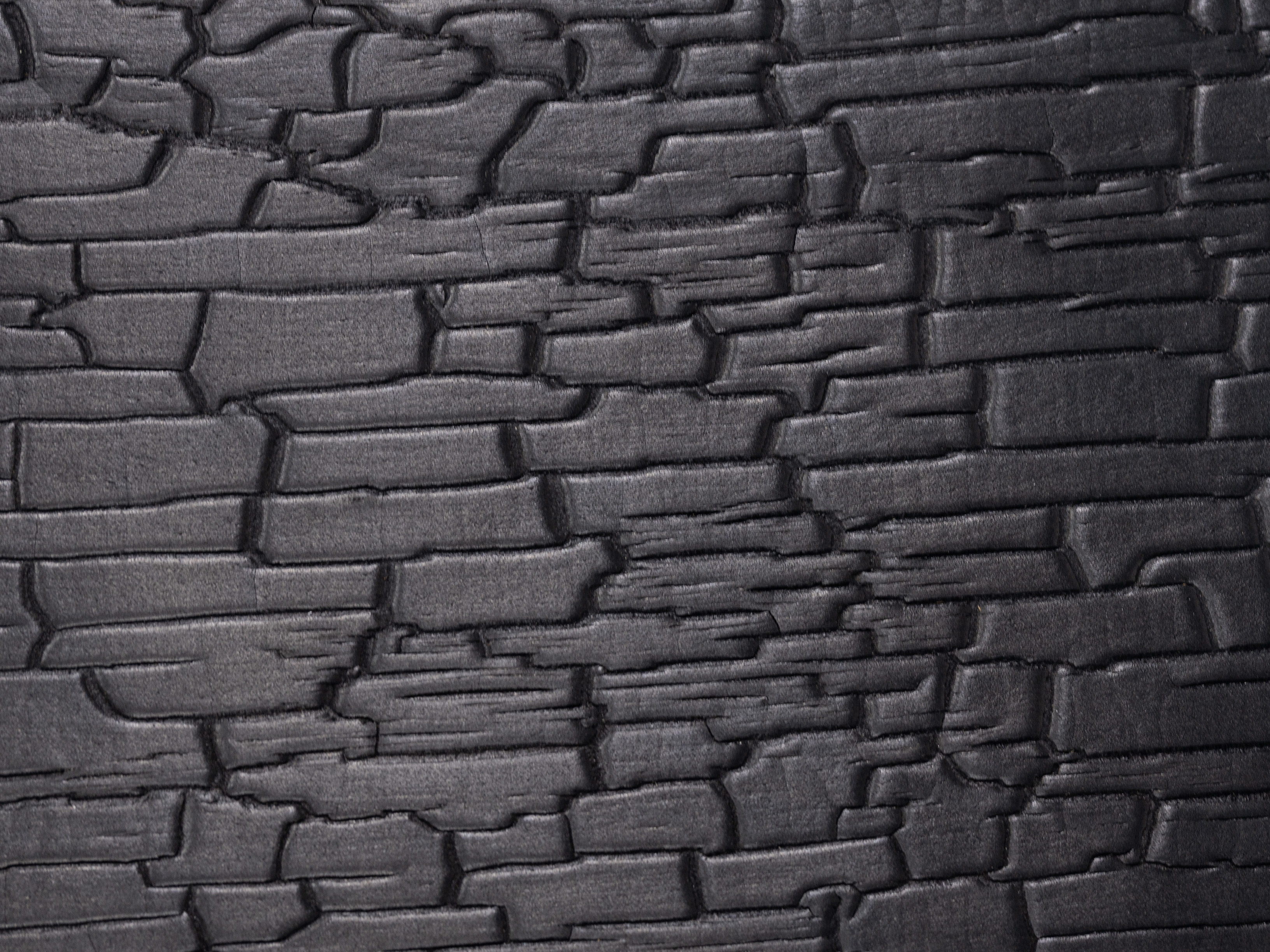
"Alligator skin" in the form of soot
© raumprobe
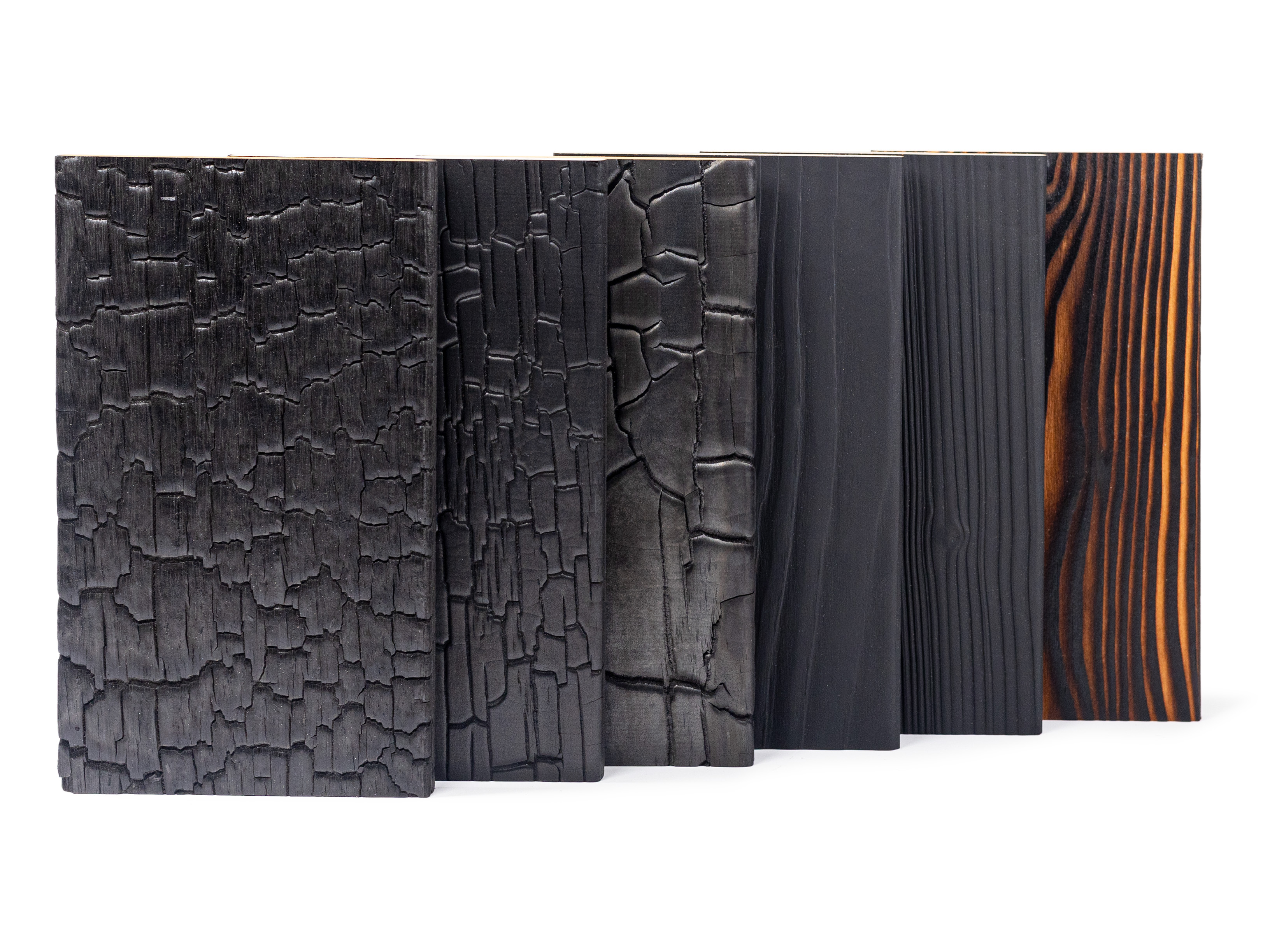
"Alligator skin" in the form of soot
© raumprobe
Yakisugi, Shou Sugi Ban or carbonised?
Various names and designations are used within the industry: charred, carbonized or burnt as a description of the surface, or names like yakisugi, suyaki, shou sugi ban, alligator skin or silk wood, to name but a few. When asked what the correct name is, the answer from Martin Gottschlich from GoodWood summarises it well: "The "Yaki" in Yakisugi means burnt, while "Sugi" is the term for Japanese cypress (botanically Cryptomeria japonica). Due to a translation error, the term "Shou Sugi Ban" has also manifested itself in the English-speaking world and is now used synonymously with Yakisugi. Strictly speaking, however, this is not correct and would not be understood in Japan."
Carbonised - not burnt
The carbonisation process is a well-kept secret of every manufacturer, which differs in detail from supplier to supplier. In order to achieve an appropriate layer thickness, the boards are burnt at approx. 600-800 degrees Celsius for several minutes in a controlled environment. Depending on the process, however, not only the appearance is affected, but also the associated durability. Not everything that looks charred is treated and protected throughout, as for example is the case when the surface has only been burnt with a Bunsen burner.
Hot material variety in charcoal black
The range of carbonised surfaces is currently growing steadily. To avoid comparing apples with pears - or more appropriately here - soot with carbonisation, it is important to take a close look at the selection, study the technical data sheets and talk to the manufacturers. For façade applications, the "functional" aspect is key, whereas material depth created by carbonization is more important when used in interiors. If you are only interested in the deep black appearance, there are even more alternatives.
Choosing the "right" type of wood
The Nakamoto family has been active in the forestry industry for more than 100 years. For over 60 years, Yakisugi has been burnt exclusively from Japanese cypress with targeted charring. The production process is viewed holistically and across generations - the processed wood comes largely from the company's own forest stands, which cover over 2000 hectares.
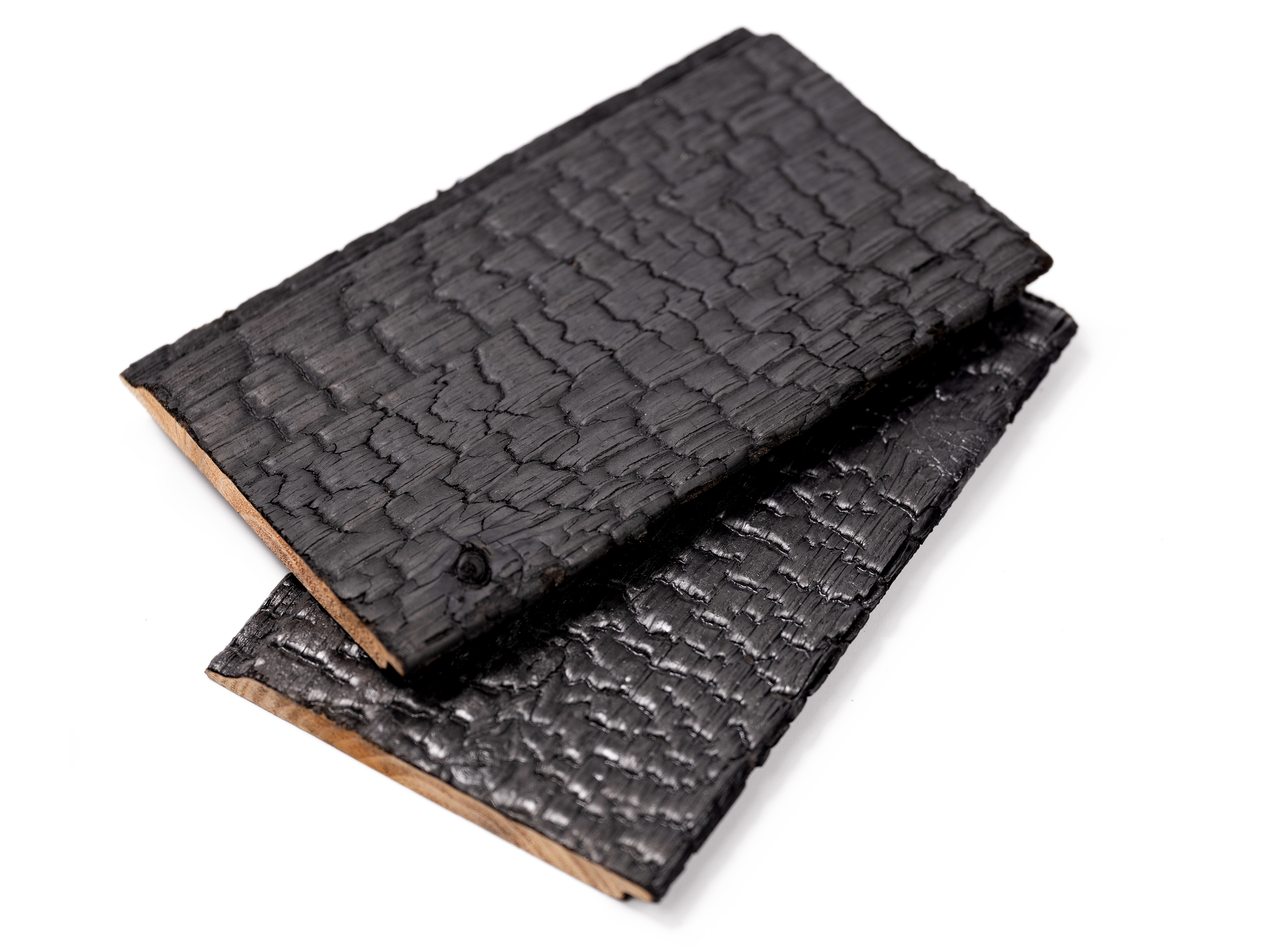
Three basic surfaces are offered: Suyaki (original charred, "alligator skin"), as well as Gendai (brushed once) and Pika-Pika (brushed twice). Different coating and colour variants are also available for each surface.
© raumprobe
Ready-to-install wall panels
Relief wood is made up of real wooden elements that can be installed quickly using a sophisticated installation system. Various types of wood and surface treatments are available for wall paneling. The variant in rough-split spruce or fir significantly enhances the tangible quality of the charred version and conjures up warmth that doesn't even require a fire to burn.
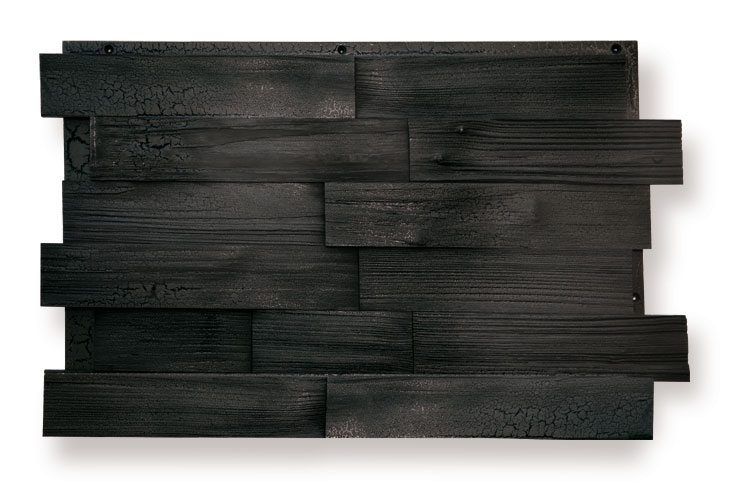
Wall panelling made of solid, rough-split spruce/fir with a charred surface.
© Reichert Holztechnik
Carbonised wood in various forms
The carbonised wood product range can be used indoors and outdoors. Depending on the type and strength of the flame treatment, different looks are created, which can be further enhanced with additional processes such as oiling or glazing. A wide range of products is therefore available.
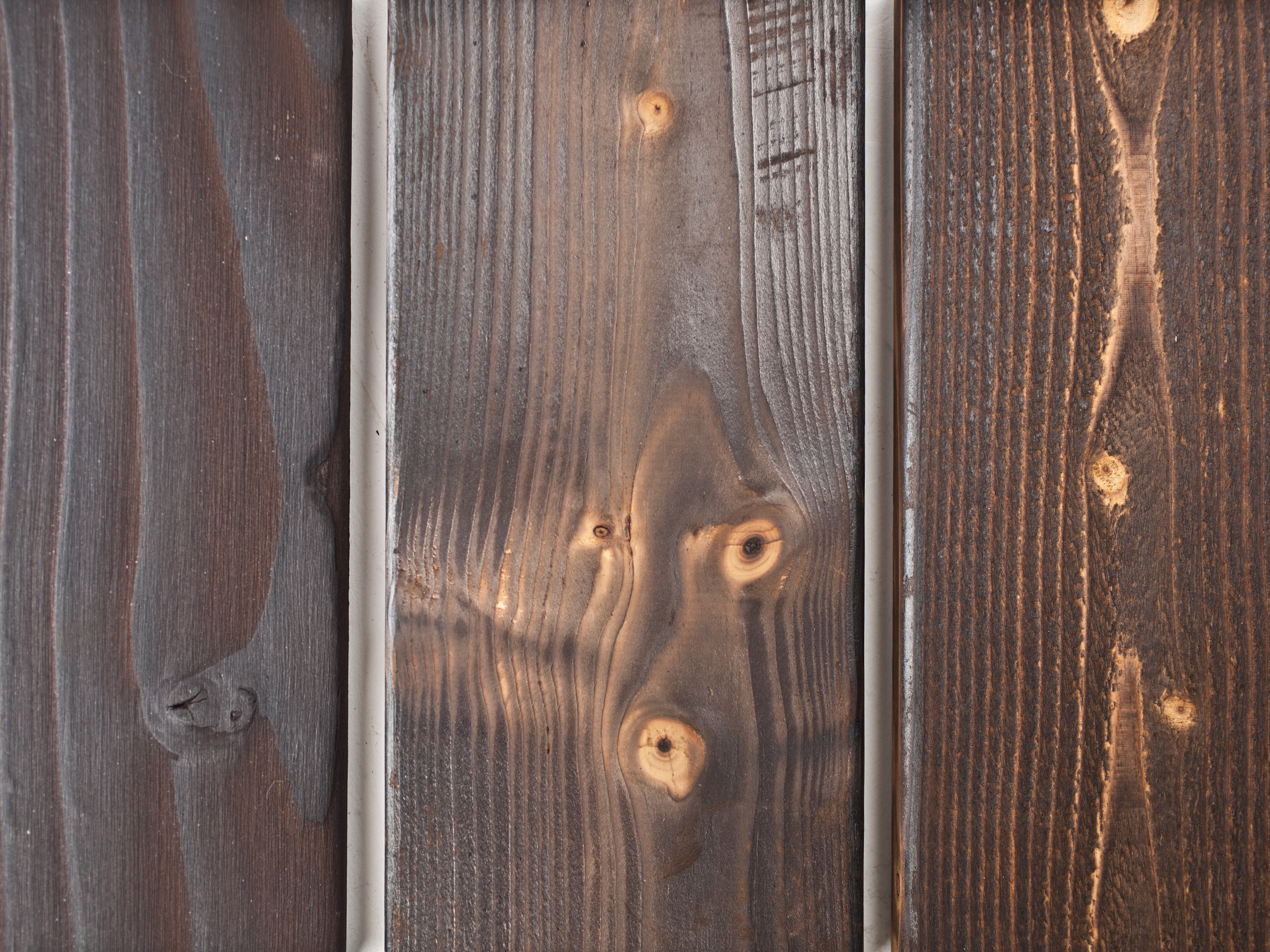
Playing with fire creates different impressions.
© raumprobe
Hotly flamed résumé
Our standardisation mania makes natural products and individual surfaces difficult to deal with. But that is precisely what makes them so special. Anyone who gets familiar with the hot technique will quickly realise that these woods on the façade also weather over decades due to exposure to the weather. Looking at Japan, I would like to suggest that it is not uncommon to regularly treat and maintain such façades - the development of a patina over time is seen as the result of a natural process that is more appreciated than criticised.
Appendix from raumprobe
As part of her diploma thesis "Anaesthesia as a paradigm of design", Kathrin Alischer, now an employee at raumprobe, has designed a midnight black piece of furniture made of silver fir. The wood surface is heat-treated using a gas burner. The resulting appearance of the deep black carbonised wood not only makes a strong statement but illustrates the possible use of traditional processes to create contemporary sterile material surfaces.
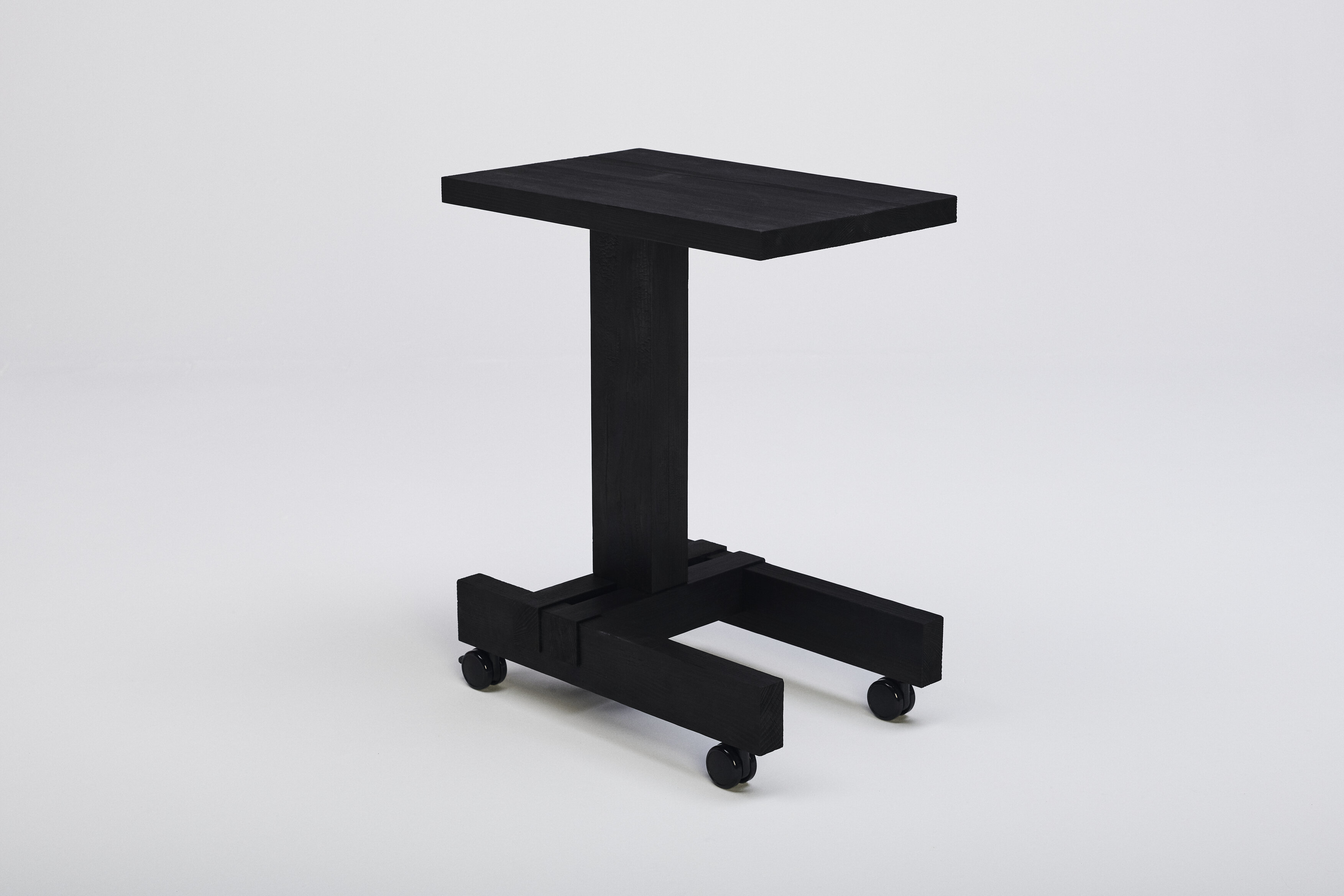
The flamed surface of the silver fir was treated with pure linseed oil varnish to fix it in place.
© Kathrin Alischer
Originally written by Hannes Bäuerle | raumprobe